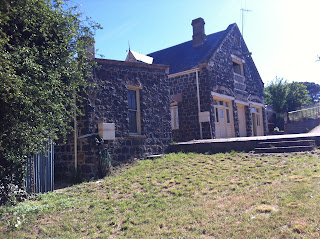It was about 5:30pm on Thursday 8 April 2010 and I was in the paediatric emergency department at Sydney Children's Hospital with Issie, who was 9 years old and very very sick.
The JDRF logo was on a blue and black backpack handed to Issie by a young endocrinology registrar who was just finishing a 28 hour shift at the hospital - she stayed a little while longer when she heard that there was "another" new diagnosis (Issie) on the way by ambulance. An 8 year old little girl was diagnosed earlier that day.
Issie's diagnosis is a different story for a different day.
For this post I have decided to look at the history of the Juvenile Diabetes Research Foundation, an organisation that has become an enormous part of our lives since the Easter school holidays last year.
The natural starting point of this post is a video about the Founding of the Juvenile Diabetes Foundation ("Research" was added later) by the Lee Ducat, a T1D Mum - just like you and me!
The Juvenile Diabetes Foundation began it's life at a cocktail party on the evening of 21 May 1970.
According to an article on the JDRF.org website, "The Founding of JDRF" it was decided that the foundation would be run by volunteer lay people.
In the first decade of it's life, research funded by the JDRF led to the discovery of hormones which alter the effect of insulin - including glucagon, which is now an essential item in every Type 1 Diabetic's arsenal of medical supplies!
The 1970's also saw the discovery of methods of treating the progression of diabetic eye disease as well as
the first test for measuring long-term blood glucose levels (the HbA1c test).
During the 1980's the JDRF funded research which led to the development of genetically engineered insulin, and experimentation with a pre-programmed insulin delivery system - the early forerunner of the insulin pumps we now have available!
Important discoveries were also made with respect to the effects of blood sugar on brain function and foetal development.
In the 1990's research funded by the JDRF headed down the path of Islet Cell Transplantation, and saw advancements in pancreatic transplants and their success rates.
Progress continued to be made in the fields of diabetic retinopathy and cardiovascular disease.
This was also the decade that the JDRF established the Human Islet Distribution Program.
With the new millennium came many new advances in fields of Islet Cell Transplants, non-invasive glucose monitoring, intervention into the early progression of diabetic eye disease, clinical trials aimed at the preservation of functioning insulin-producing cells in order to slow or stop the progression of type 1 Diabetes in its early stages.
Better methods of monitoring, insulin delivery and tools for treatment and management of type 1 diabetes have been a major aspect of JDRF funded research since the year 2000 - with substantial focus placed upon the Artificial Pancreas.
These areas of research and development are only a small sample of the JDRF's enormous impact upon the lives of children and adults with Type 1 Diabetes around the world.
And to think, this all began with a few parents of Type 1 Diabetic kids sitting around a kitchen table talking about what they could do to make their kids' lives just a little easier.
Now, in the second decade of the new millennium, the same thing is happening - although the kitchen table has become online social networking groups.
Although we don't have a CURE, yet, if the JDRF has given us ONE THING - it is proof that we parents CAN make a difference!








































